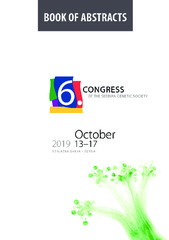Приказ основних података о документу
Differences in yield and stability of maize hybrids presented by the AMMI analysis
| dc.creator | Brankovic-Radojcic, Dragana | |
| dc.creator | Babić, Vojka | |
| dc.creator | Petrović, Tanja | |
| dc.creator | Milivojević, Marija | |
| dc.creator | Kojić, Jasna | |
| dc.creator | Srdić, Jelena | |
| dc.date.accessioned | 2023-11-15T08:32:29Z | |
| dc.date.available | 2023-11-15T08:32:29Z | |
| dc.date.issued | 2019 | |
| dc.identifier.isbn | 978-86-87109-15-5 | |
| dc.identifier.uri | http://rik.mrizp.rs/handle/123456789/1294 | |
| dc.description.abstract | This study presents three-years (2011-2013) research on 36 commercial hybrids from different FAO maturity groups (300-700). Trial was set up according to the Randomized Complete Block Design (RCBD) in three replications at 8 different locations in Serbia. Analysis of variance showed significant impact of genotype, environment and their GXE interaction on the grain yield (p>0,01). An average grain yield in 2011 ranged from 10.38 t/ha (H1) to 13.32 t/ha (H36), in 2012 it varied from 5.70 t/ha (H3) to 7.86 t/ha (H14) and in 2013 from 8.79 t/ha (H5) to 12.01 t/ha (H36). Based on the AMMI analysis, yield and stability of the maize genotypes were evaluated. In the total sum of squares, environment accounted for 72.4%, 73.3%, 69.13% (2011, 2012, 2013, respectively), genotype 6.22%, 2.81%, 6.15% (2011, 2012, 2013, respectively) and interaction between genotype and environment accounted for 9.09%, 10.06%, 11.87% (2011, 2012, 2013, respectively). Due to the fact that IPC1 and IPC2 encompassed 62.7%, 62.6%, 60.0% (2011, 2012, 2013, respectively) of total sum of squares of interactions, AMMI2 model was also considered. Grain yield of hybrids varied in dependance of location and the prodution year. In 2011, the most stable hybrids were H21, H9 and H24; in 2012: H13, H21 and H6; while in 2013 those were H21, H29 and H22. The lowest variation in average grain yield was recorded at locations Sombor and Kikinda (2011), Svilajnac (2012) and Pančevo (2013) where the grain yield was above the average, while location Loznica proved to be the most yielding in all production years. Based on the results from AMMI analysis, more precise reccomendations could be given for the hybrid production at certain locations, aiming to achieve the highest yield. | sr |
| dc.language.iso | en | sr |
| dc.publisher | Belgrade : Serbian Genetic Society | sr |
| dc.rights | openAccess | sr |
| dc.rights.uri | https://creativecommons.org/licenses/by/4.0/ | |
| dc.source | 6th_congres_SGS, 13-18.10. Vrnjačka Banja-Book of_abstracts_ | sr |
| dc.subject | maize hybrids | sr |
| dc.subject | grain yeld | sr |
| dc.subject | ammi analysis | sr |
| dc.subject | gxe interaction | sr |
| dc.title | Differences in yield and stability of maize hybrids presented by the AMMI analysis | sr |
| dc.type | conferenceObject | sr |
| dc.rights.license | BY | sr |
| dc.citation.spage | 210 | |
| dc.identifier.fulltext | http://rik.mrizp.rs/bitstream/id/6341/bitstream_6341.pdf | |
| dc.identifier.rcub | https://hdl.handle.net/21.15107/rcub_rik_1294 | |
| dc.type.version | publishedVersion | sr |


